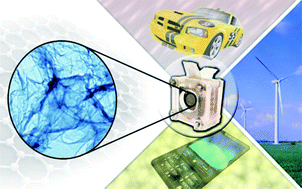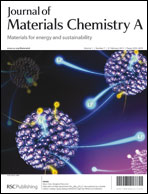Activated and nitrogen-doped exfoliated graphene as air electrodes for metal–air battery applications†
Abstract
Capitalizing on the immense theoretical energy storage densities of metal–air batteries requires the development of high performance air electrode materials. These materials must simultaneously meet the criteria of high surface areas, excellent oxygen reduction reaction activity and low cost. Herein, catalyst materials with exemplary surface areas (2980 m2 g−1) and ORR activity were developed by innovatively coupling KOH activation of exfoliated graphene with ammonia induced nitrogen doping (N-a-ex-G). Specifically, ORR activity approaching that of commercial platinum based catalysts was observed (ca. 45 mV lower onset potential), and these unique materials were found to provide excellent practical metal–air battery performance. In particular, N-a-ex-G provided a 60% higher discharge current (on a catalyst mass basis at a cell voltage of 1.0 V) in a zinc–air battery single cell, along with higher discharge voltages and a 42% capacitance increase in comparison with pure carbon black based electrodes in a Li–oxygen battery single cell. These promising results, attributed to the favourable properties of N-a-ex-G, including high surface areas and inherent ORR activity indicate their practicality as air cathode electrocatalysts.


 Please wait while we load your content...
Please wait while we load your content...